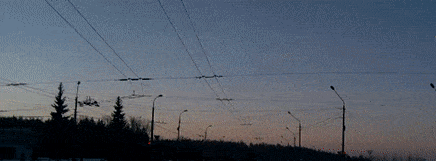Earlier this month, astronomers discovered that an asteroid the size of a skyscraper flew quite close to Earth—but they did not know about it until two days after the incident occurred. The asteroid, named 2023 NT1, zoomed by closer to Earth than to the moon on July 13 at a speed of approximately 53,00 mph, according to Live Science. The space rock measured 200-feet wide and was approximately the size of a 20-story building.
Grab Your Sunglasses
The reason why scientists were unaware of the passing is because the asteroid traveled to Earth from a direction with a lot of sun glare. This made the asteroid difficult to see in telescopes. It was not until July 15 when the Asteroid Terrestrial-impact Last Alert System (ATLAS) in South Africa spotted the space rock leaving Earth’s vicinity. This system was created to track asteroids to prepare for possible impacts but was a little late to the party. ATLAS wasn’t the only system that failed to spot 2023 NT1; other telescopes around the world belatedly recorded the asteroid’s path as well, according to the International Astronomical Union’s Minor Planet Center.
The good news is that this asteroid is not large enough to be classified as a potentially hazardous object. Astronomers have determined that there is no imminent risk of an impact from 2023 NT1 in the next 10 years. What is even more comforting is that Earth should be safe from extinction-type asteroids for at least 1,000 years, according to experts.
Unfortunately, near-Earth asteroids can be impossible to see in blind spots caused by the sun’s glare. This isn’t even the first time it has happened! Tragically, 1,500 people were injured when a 59-long-foot asteroid exploded over Chelyabinsk, Russia in 2013. Buildings and glass were damaged and shattered as a result, but luckily no one was killed. Dashboard cameras famously captured footage of the event.
Keeping An Eye on the Sky
Experts regularly keep tabs on over 31,000 known asteroids in Earth’s vicinity; however, scientists understand that solar blind spots are potentially problematic. As a result, the European Space Agency is building a satellite through its NEOMIR mission to orbit Earth and the sun in order to see big asteroids that are hard to spot due to sun glare. The satellite is expected to be operational in 2030.
While perhaps not quite as impactful as the NEOMIR mission but worth mentioning nonetheless, a classic toy has helped take care of astronauts–and that toy is Barbie. Barbie is not only a box office success; she is also a rockstar when it comes to helping space travelers.
Scientists showered Barbie wearing an astronaut suit with a moondust substitute and then blasted her with liquid nitrogen. Since it is illegal to buy and sell actual moondust, researchers improvised. Using volcanic ash from Mount Saint Helens researchers were able to remove 98 percent of the matter from the suit! It is important to remove moondust from spacesuits because it is toxic to human cells. Barbie survived the ordeal, and her space suit was only minimally damaged. The experiment provided a big improvement over the brush and dust system traditionally used to remove moondust.
If you are a space junkie, be sure to check out the original footage from Apollo 11’s successful landing in 1969 at the Out of This World gallery at Ripley’s Believe It or Not! Orlando.
By Noelle Talmon, contributor for Ripleys.com
EXPLORE THE ODD IN PERSON!
Hits: 0










